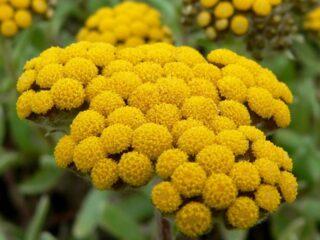Content
Growing foxglove seedlings from seeds is a simple activity that does not require any special gardening skills. During the cultivation process, the plant does not cause any trouble, is considered unpretentious in care and can grow in different conditions. It is usually planted as seedlings as a medicinal crop, since it is used for use in traditional and folk medicine. Although sometimes cultivation is practiced in flower beds.

There are decorative varieties of foxglove woolly that look interesting in front gardens and bouquets
Description of foxglove woolly
Foxglove (Digitalis lanata) is a representative of a species of perennial herbaceous plants with small, woody, fibrous rhizomes. The stems of the crop are erect, usually grow from 30 to 80 cm in height, solitary, dark purple in color. The leaf plates on them are evenly spaced. The shape of the foxglove woolly leaf in the lower part of the stem is pointed or obtuse, in the upper part it is lanceolate. Length is about 15 cm, width up to 4 cm, but the higher you go to the top, the smaller these figures become.

The lower leaf plates of the plant usually fall off at the beginning of flowering.
The flowers of the crop appear in June-August and are presented in a multi-sided raceme. The bracts are leaf-shaped, less often scale-shaped, the pedicels are sinuous or straight, up to 1.5 cm long. The buds are bell-shaped, covered with hairs, their color is predominantly yellow with a brown tint, but there are species with different colors of the inflorescences. The fruits of the crop are egg-shaped capsules, in which, when ripe, small seeds are formed, from which seedlings are subsequently grown.
There are several types of digitalis, and they all have medicinal properties, but preparations based on the woolly variety have a number of distinctive qualities: they are absorbed faster, accumulate less in the body, and have a more powerful diuretic property. It is because of this that its cultivation from seedlings is most popular.

Woolly foxglove leaves and their juice are used for medicinal purposes.
Where does it grow
Under natural conditions, foxglove is found in forests, bushes, and meadows. It can grow on the slopes of clay and calcareous mountains and hills. Its habitat is represented by the countries of Europe and the former Soviet Union. Most often this plant can be seen in Upper Transnistria and Moldova. Its cultural cultivation from seedlings is actively practiced in the North Caucasus.
Chemical composition of foxglove woolly
Foxglove woolly belongs to the Plantain family and contains many useful substances in its leaves, in particular, about 30 compounds of cardiac glycosides (cardenolides).The main ones are lanatosides A, B, C, specific ones are digoxin, gitoxin, acetyldigitoxin. In addition, the composition of the plant included:
- tigonin;
- digitonin;
- steroid saponins.
The largest number of glycosides is contained in the rosette leaves of young foxgloves
Medicinal properties
Plant glycosides have a positive effect on the functions of the heart organ. In particular, on diastole, systole and stroke volume. The therapeutic effect is expressed in an increase in minute blood volume, a decrease in the amount of circulating blood, a decrease in heart size, a decrease in venous pressure and normalization of blood pressure. Also, the drugs for which foxgloves are grown from seedlings help accelerate blood flow, increase diuresis, and increase the vital capacity of the lungs. But it is worth noting that medications, depending on the age, gender and health status of the patient, can act differently.
Uses of foxglove woolly
Growing foxglove woolly from seedlings is carried out to obtain medicines that help in the treatment of heart failure with signs of stagnation in the systemic and pulmonary circulation. They are also taken for myocardial dystrophy, valve disease, atrial fibrillation (tachyarrhythmic form), paroxysmal tachycardia.
Medicines made by growing foxglove woolly from seedlings are prescribed for nephritis, myodegeneration, decompensated heart disease, as well as when preparing heart patients for childbirth and surgery.
Typically, such drugs are prescribed in the first 2-5 days in maximum doses. This helps to achieve the full therapeutic effect. In subsequent days, the dose is reduced depending on the data obtained from the examination of the patient. When administered intravenously, the drug is diluted in 20 ml of 20% or 40% glucose solution.

Due to its positive effect on the sick body, foxglove is popularly called the “Queen of Heart Remedies.”
Contraindications
The main contraindications to the use of digitalis preparations are the following diseases:
- bradycardia;
- myocardial infarction;
- angina pectoris;
- lung diseases;
- gastric tachycardia;
- atrioventricular block.
Medicines obtained from grown foxglove seedlings should not be given to children; they are prescribed to pregnant women under strict supervision.
Signs of poisoning in case of overdose are:
- nausea;
- vomit;
- dizziness;
- decreased diuresis;
- raising the pulse.
Collection and preparation
To use foxglove woolly in medicine, it is specially grown. The grass is cultivated on an industrial scale, and seedlings are obtained from seeds.Leaves are collected in the first year of life in the rosette phase (beginning of summer) when their size is 6 cm or more. After 5-6 weeks, the collection is repeated. In the second year of growing grass, only the stem plates are plucked from seedlings before flowering.
The material is prepared by drying at a temperature from +40 to +60 °C: to obtain digoxin - at no more than +45 °C, digilanide - at 55-60 °C. Store raw materials in a well-ventilated, cool and dry place.

Most often, patients are prescribed the digitalis drug Digoxin.
Conclusion
Growing foxglove seedlings from seeds is a simple process. Sowing of the material is carried out in the spring, superficially according to the standard scheme. The crop shoots appear within 10-15 days. They begin planting seedlings after a couple of months, when the threat of frost has passed. Minimal care is required when growing grass. It is not afraid of cold weather, grows in the shade, and reproduces well by self-sowing.









